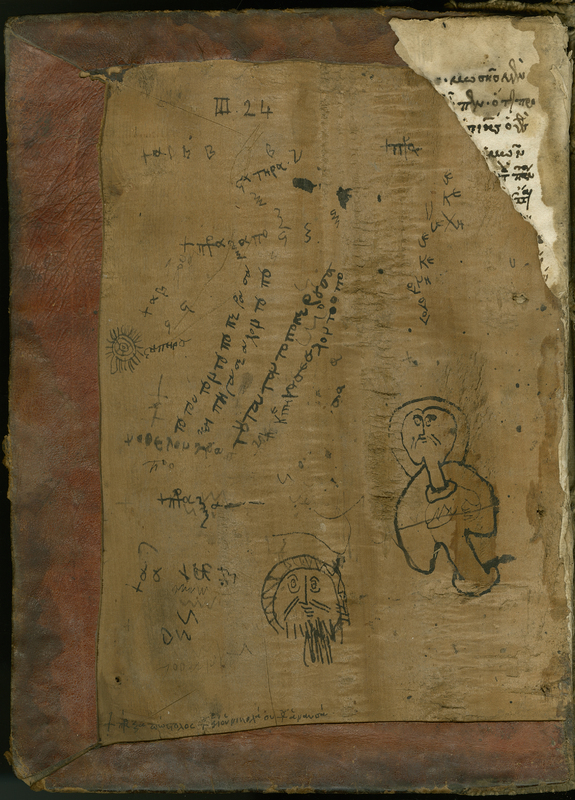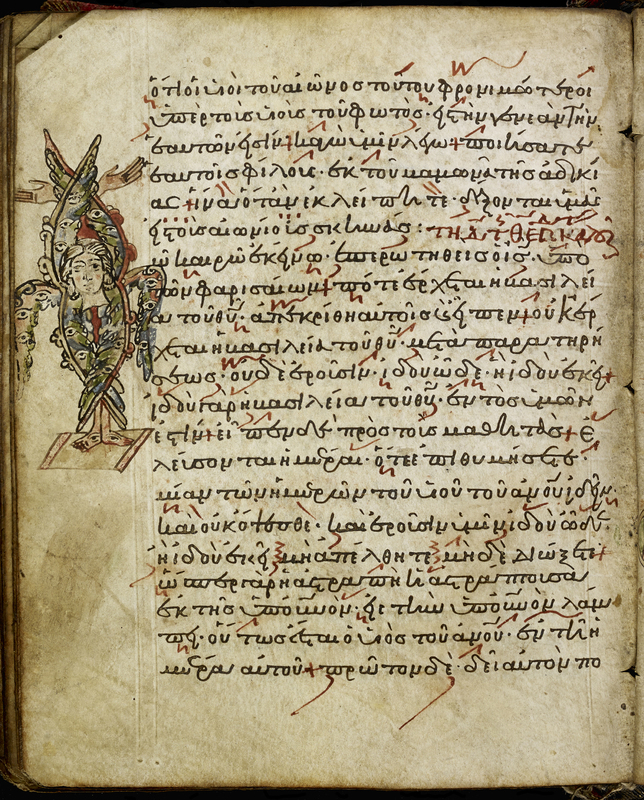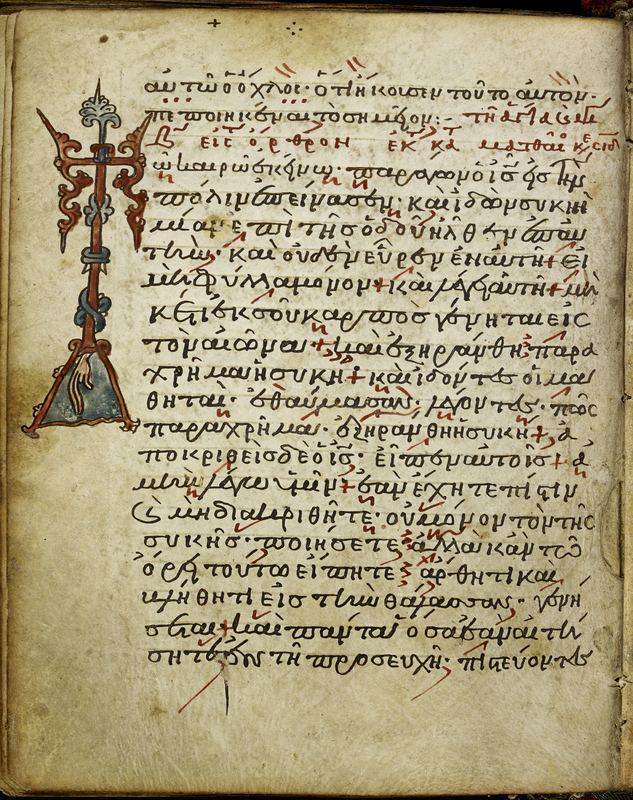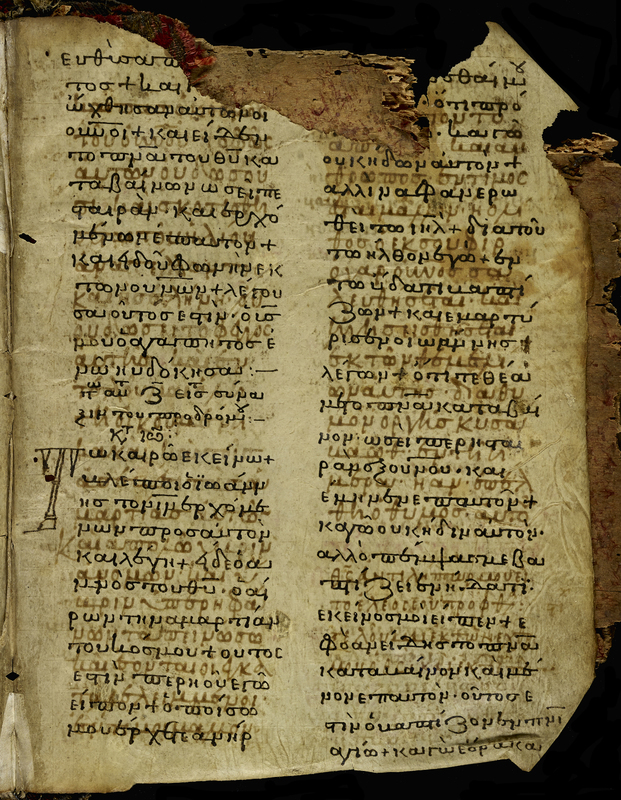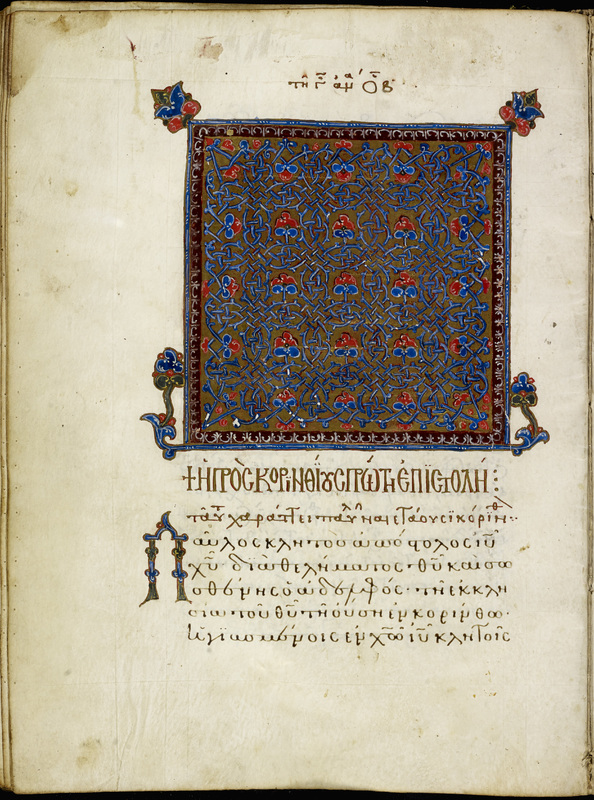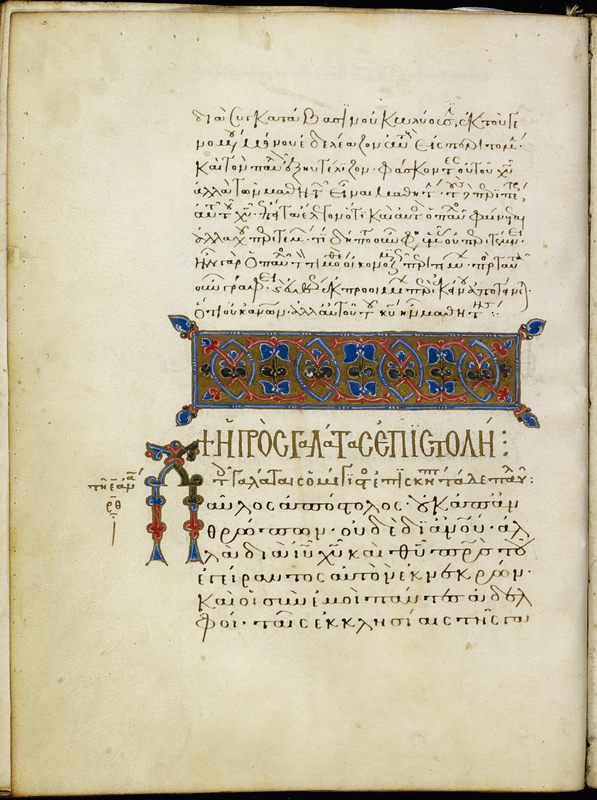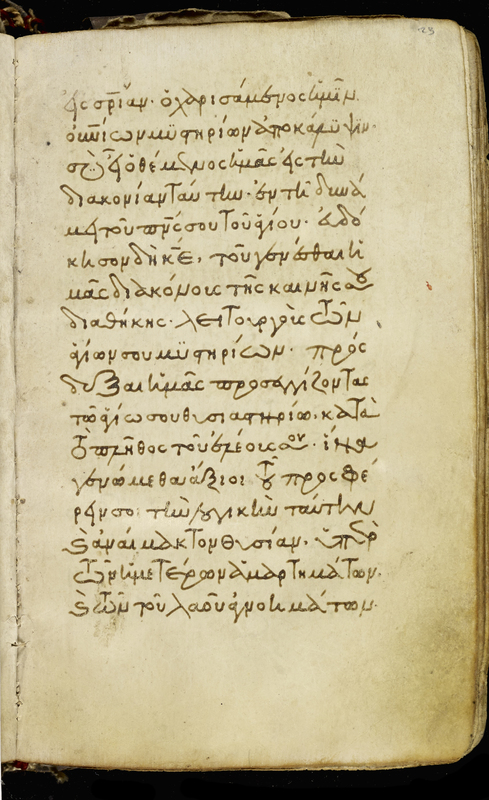The Monasteries
Annaclara Cataldi Palau has examined the Greek manuscripts acquired by several institutions from the Burdett-Coutts auction in London on May 15 1922, paying special attention to the origin of these manuscripts.
Considering that these manuscripts were acquired in the north-western Greek city of Ioannina, Cataldi Palau argues that there are two important nearby monastic centers where many of the Burdett-Coutts manuscripts might have been produced: the island in Ioannina Lake in the modern Epiros region of Greece; and the so-called Meteora monasteries, which refers to a group of monasteries built on high pinnacles of rocks in an area located at the northwestern edge of Thessaly.
Based on the style of their script and decoration, Cataldi Palau has identified as "Epirote" nine Burdett-Coutts manuscripts from the University of Michigan collection: Mich. Mss. 17, 28, 29, 31, 38, 43, 50, 59, and 83. Furthermore, Cataldi Palau has identified seven of these Burdett-Coutts manuscripts as being from the monastery of St. Nicholas Anapausas in the Meteora. To be precise, there are two keys for this identification. First, there are ownership inscriptions in Mich. Mss. 35, 38, 39, 78, and 79. Second, as it is mentioned in some of the binding descriptions in the next section, the decoration patterns of the bindings also links some of these manuscript to the monastery of St. Nicholas Anapausas: Mich. Mss. 35, 44, 47, 78, and 79.
Other manuscripts in this exhibit (Mich. Mss. 34, 49, 134) were copied in the Hodegon monastery in Constantinople. Built in the ninth century, throughout so-called Palaiologan period (1261-1453), the scriptorium of the Hodegon monastery gained an extraordinary reputation for the production of high-quality manuscripts executed by the best calligraphers.
Shown above is fol. 5v from Mich. Ms. 35. Note the elongated initial epsilon. In this manuscript, these elongated initials were executed in the ink color of the text and bright red ink, and were decorated with typical Epirotan patterns such as knots.
The script of Mich. Ms. 35 is an archaizing minuscule, which can be characterized as “traditional” Epirote style. The scribe often uses “elephant-trunk” zetas and majuscules lambdas that descend below the line. The decoration is plain. One pi-shaped interlace headband for the Menologion is on fol. 114v, executed in blue and bright red colors. Several narrow rectangular and interlace headbands separate the months in the Menologion.
Kavrus-Hoffmann suggests that the manuscript was copied in the fourteenth century because of a similar script found in a manuscript written by the lector Demetrios Brizopoulos, most likely copied in Epiros in 1253 (Ms. E. D. Clarke 8, Bodleian Library, Oxford).
Note above that an ownership note is on the back of the front cover, written directly on the wood (bottom left): Πραξαπώστολος τοῦ ἁγίου Νικολάου τοῦ ἁναυσά (Praxapostolos of the St. Nicholas Anapausas [Monastery]).
Mich. Ms. 35 belonged to Baroness Burdett-Coutts (no. III. 24 in her collection), and was acquired by the University of Michigan at the Burdett-Coutts sale in May 1922. Sotheby, Wilkinson and Hodge, The Burdett Coutts Library, lot 195.
Shown above is fol. 111v from Mich. Ms. 28. Note the initial tau in the shape of an imaginary winged creature with a human face, blessing hands, legs, and numerous eyes.
The manuscript was executed by one scribe, Nikephoros Kerean, as indicated in a colophon on fol. 17r. His script is archaizing in nature, medium sized, clear, and with a slight inclination to the right. The manuscript is abundantly decorated with large colored initials, most of which are tall taus and tall narrow epsilons. They are ornamented with knots, rings, palmettes, and blessing hands. Some initials are in the shape of an imaginary winged creature with a human face, hands, and legs and with numerous eyes, like the initial tau shown in this opening. According to Cataldi Palau, such decoration is typical of the manuscripts produced in Epiros, a style that continued to flourish in Epiros in the post-Byzantine period.
Shown above is fol. 146v. Note the initial tau decorated with a palmette, ring, knot, and blessing hand.
See above fol. 220v from Mich. Ms. 28. Note the palimpsest text, a fragment from the Old Testament dated in the eleventh century CE.
Mich. Ms. 28 was executed probably during the end of the thirteenth century or the first half of the fourteenth. After being produced in Epiros, the manuscript belonged to the church or monastery of Holy Apostles in Mesareia, probably on the island of Corfu, as suggested by Cataldi Palau. Then it belonged to Baroness Burdett-Coutts (no. III. 46 in her collection). It was acquired by the University of Michigan at the Burdett-Coutts sale in May 1922. Sotheby, Wilkinson and Hodge, The Burdett Coutts Library, lot 185.
Above is an image of fol. 150v. Note the headpiece for the First Epistle of Paul to the Corinthians, ornamented with stylized vegetal and floral design on a gold background. The artist has used an abstract interface, which is interspersed with palmettes.
The script is medium-size, an exceptionally calligraphic, archaizing minuscule, which imitates the eleventh-century Perlschrift. This writing style can be found in many manuscripts that make up the so-called Palaiologina group and were produced in the early Palaeologan period: the last quarter of the thirteenth century and the beginning of the fourteenth.
Like most extant manuscripts of the Palaiologina group, Mich. Ms. 34 is exquisitely decorated with ornamental headpieces, headbands, and initials. There are three major headpieces: at the beginning of the Acts, at the beginning of the Epistle of Paul to the Romans, as shown above, and at the beginning of the First Epistle of Paul to the Corinthians, as displayed below. These three headpieces are decorated with vegetal and floral design on a gold background.
See above fol. 210v from Mich. Ms. 34. Note the headpiece for the Epistle of Paul to the Galatians, decorated with vegetable and floral motifs.
The manuscript was executed in the last quarter of the thirteenth century in Constantinople, in the small circle of calligraphers and illuminators who produced codices of the so-called Palaiologina group. Inmaculada Pérez Martín identified the anonymous scribe as the monk David and suggested that he was a monk in the Hodegon Monastery in Constantinople.
Shortly after its execution, the manuscript was acquired by Antonios Malakes, who was twice archbishop of Veroia. The next owner was a monk called Methodios, who left his name on fol. 343r. The manuscript was purchased for Baroness Burdett-Coutts (no. III. 1 in her collection). It was acquired by the University of Michigan at the Burdett-Coutts sale in May 1922. Sotheby, Wilkinson and Hodge, The Burdett Coutts Library, lot 194.
Shown above is fol. 32r from Mich. Ms. 49. The script has been attributed to Ioasaph, whose handwrting has a pronounced inclination to the right and is rich in flourishes and enlarged letters. Distinctive letters and ligatures include alpha with an elongated oblique stroke.
Mich. Ms. 49 consists of a selection of treatises on liturgy, including also an anthology of readings from the Gospels. Nadezhda Kavrus-Hoffmann identified the scribe as Ioasaph II, the famous calligrapher of the Hodegon Monastery in Constantinople.
The manuscript was produced in the second half of the fourteenth century or beginning of the fifteenth. It belonged to Baroness Burdett-Coutts (no. I. 10 in her collection), and was acquired by the University of Michigan at the Burdett-Coutts sale in May 1922. Sotheby, Wilkinson and Hodge, The Burdett Coutts Library, lot 218.

The Saints

The Bindings



